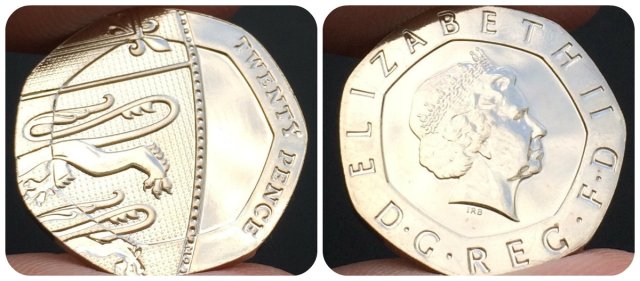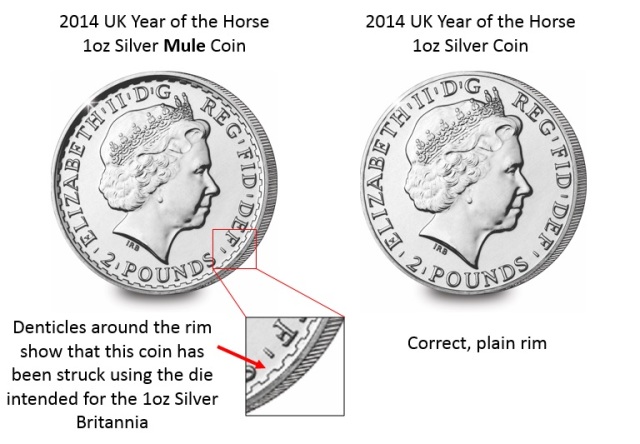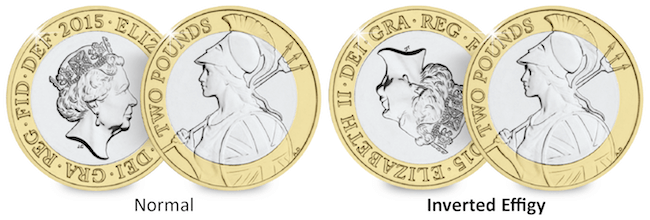Poll: Which 2016 Coin design is your favourite?
I’m sure you’ll agree that 2016 is shaping up to be a great year for coin collectors with so many significant anniversaries being commemorated and some fantastic designs.
So which coins are you most looking forward to finding in your change?

The Battle of Hastings 50p
2016 marks the 950th Anniversary of The Battle of Hastings. The reverse of the coin depicts the fate of King Harold at the hands of William The Conqueror, along with the date 1066 – when the battle took place. The obverse features the fifth portrait of Queen Elizabeth II by Jody Clark.

The Great Fire of London £2
The Great Fire is one of the most well-known disasters to hit London, when an accidental spark from a baker’s oven on Pudding Lane led to the destruction of a third of the city. This £2 coin marks the 350th anniversary of this iconic moment from which modern London emerged. The reverse depicts the city of London burning in flames from a distance and was designed by Aaron West.

The World War One £2

The Shakespeare Tragedies, Comedies and Histories £2 Coins
Continuing the 4 year commemoration of the Centenary of the First World War, the third in the series of £2 coins commemorates the ‘Pals Battalions’ and their tragic debut at the Battle of the Somme 100 years ago. The design features a modern interpretation of three ‘Pals’ side by side, inspired by the works of British WWI artist C.R.W. Nevinson.
2016 marks 400 years since the death of William Shakespeare. In honour of one of our greatest literary figures, The Royal Mint have issued three brand new £2 coins that honour an aspect of Shakespeare’s famous work including tragedies, comedies and histories.

The Beatrix Potter 50p Series: Beatrix Potter, Peter Rabbit, Jemima Puddle-Duck, Mrs Tiggy-Winkle and Squirrel Nutkin
To celebrate the 150th anniversary of the birth of Beatrix Potter, the Royal Mint have released a series of 50p coins to celebrate the artist behind some of the best-loved characters in children’s literature. The coins celebrate Beatrix herself as well as some of the animals from her children’s tales.

The ‘Team GB’ 50p
To wish Team GB success in Rio de Janeiro this summer, The Royal Mint issued this Team GB 50p coin just last month. The reverse features a swimmer with the Team GB logo, the Olympic rings and the inscription “TEAM GB”.
Here at Change Checker we can’t wait for these coins to enter into circulation, but with so many great designs to choose from, which of these designs is your favourite?
Vote in our poll here;
[polldaddy poll=9356264]
Mis-strikes and myths
Every keen collector knows that it is worthwhile paying close attention to the small details of your coins – it’s the only way you can ever hope to spot an error. However, it’s also important to know when you have a genuine rarity.
There are a few stories that crop up more often than others, so today I’d like to help dispel some of the myths about UK coins.
Mis-strikes
2016 £2 coins edge inscription mix up
In 2020, a small collection of the 2016 Shakespeare Tragedy £2 coins were found with the wrong edge inscription on them. A mix up of blanks led to some of the Shakespeare Tragedy £2 coins being struck with the edge inscription of the First World War Army £2, which was issued in the same year.

‘Errors’ like these can occur when blanks get mixed up or aren’t properly changed over when striking a new batch of coins.
This type of miss-strike isn’t very common but it can happen when coins are struck in the same year, like the 2013 London Underground £2 coins, where some were found with the incorrect edge inscriptions!
One of a kind 20p struck on a 1p blank
In 2018, the news broke of a one of a kind coin purchased on eBay for just £50 now being valued at over £2,000!

This unique 20p coin struck onto a 1p blank has been verified by The Royal Mint as a genuine coin and was also sent to ANACS (America’s oldest coin authentication and grading service) and confirmed to contain a mix of foreign metals to form a copper plated steel blank.
It’s the first of its kind seen by ANACS and experts have suggested it would fetch a minimum of £2,200 at auction.
The undated 20p
It’s regarded by many as the Holy Grail of change collecting, and back in 2008, the undated 20p saga encouraged an entire country to start carefully checking their coins. In fact plenty of collectors are still doing just that in the hope of finding one.

In 2008, the reverse of each denomination from 1p to £1 was redesigned by Matthew Dent and so The Royal Mint produced a new die with the date on the obverse.
However, when the new Royal Shield 20p coins were struck for circulation, the old die was accidentally used. The Royal Mint confirmed that a batch of no more than 250,000 were issued with no date on either side of the coin.
The 2014 Year of the Horse ‘Mule’ Coin
A “mule” is a coin where one of the sides has been struck with the wrong die. And that’s what happened with some of The Royal Mint’s 2014 Year of the Horse coins.

The Royal Mint acknowledged the error, which resulted in approximately 17,000 Britannia coins being struck with the non-denticled Year of the Horse obverse and 38,000 Year of the Horse coins with the denticled Britannia version as their obverse. At the time listings on eBay were as high as £500.
The ‘Silver’ 2p striking error
The 2015 dated ‘Silver’ 2 pence coin was dropped into a Royal British Legion collection tin in Wiltshire a few weeks ago and made headline news nationwide.

The coin was confirmed as an extremely sought-after minting error after a 10p ‘blank’ found its way into the presses and a 2p was accidentally struck onto it.
Errors like this are extremely rare, but The Royal Mint verified the authenticity of the coin. There has only ever been one other ‘silver’ 2p which sold in 2014 for £1,357.
The Inverted Effigy £2
In 2015, a small number of “Inverted Effigy” £2 Coins entered circulation with the Queen’s head rotated clockwise by approximately 150 degrees.
First discovered by a Change Checker, and later confirmed as genuine by The Royal Mint, this unusual strike appears on a handful of the 2015 Britannia £2 Coins.
The Royal Mint has accounted for the seemingly impossible misalignment of the Queen’s effigy as “almost certainly the result of one of the dies working loose and rotating during the striking process”.
The first-year 2015 £2 Britannia is already one of the most-scarce circulating £2 coins ever issued with just 650,000 coins passing through banks and cash centres.
We have analysed 5,000 circulation coins and our results suggest that the Inverted Effigy may have affected as few as 1 in 200 of the coins struck – in other words around just 3,250 coins.
Dual Dated £1
Following reports by Change Checker and in the national press of dual dated 12 sided £1 coins, The Royal Mint has officially confirmed the error caused by a die mix up.

However, this is one of the hardest errors ever to spot because it’s incredibly difficult to see the micro-engraved date on the reverse.
It’s worth checking any 2016 coins just inside the rim of the design-side of the coin, where you will see some tiny writing. You’ll almost certainly need a Microscope or Phonescope to properly see the writing, which should reveal the date. You’re looking for a 2016 obverse-dated coin with 2017 micro-engraving on the reverse.
The Royal Mint has given no indication of how many Dual-dated £1 Coins ever went into circulation – and it’s quite likely they do not even know. This makes it difficult to put a value on the coin, but we understand that at least one example was sold for £2,500 to a buyer in Spain in 2017, which probably marks the likely ceiling for value.
Myths
2007 Abolition of Slavery £2
There is a misconception that there were two types of the Abolition of Slavery £2 coin struck for circulation. It is true that two versions of the coins exist– one has a textured finish whereas the other has a smooth finish and features the artist, David Gentleman’s initials (circled).

The key difference is that only the textured version was struck for circulation, and if you find one of the smoother types in your change, you have actually found a coin which has been taken out of a presentation pack. This makes it considerably rarer than the circulating version, so it is worth keeping rather than spending!
The 2005 Gun Powder Plot £2 spelling mistake
The 2005 Gunpowder Plot £2 commemorates the 400th anniversary of Guy Fawkes’ failed assassination attempt on King James I, but the coin is more familiar to collectors for having a spelling mistake in the edge inscription.

The timeless quote “Remember, remember the fifth of November” has been found with various combinations of Pemember, Pemembep, Novemebep and so on. The common factor here is the ‘R’ which appears as a ‘P’.
Sadly for collectors this is apparently not a striking error. The explanation from The Royal Mint is that the down-stroke of the R coincides with the milling around the edge, and as the coin has worn over time, the letter has become less defined.
This categorical statement from the Mint means that any mark-up in price for a supposed ‘error’ is completely unjustified, and although it makes the coin more interesting, it is not the mistake which it is often perceived to be.
The Battle of Britain 50p with no denomination
The Brilliant Uncirculated 50p was issued early in 2015 and was quickly dubbed an error coin. The coins, which were sold in presentation packs, had been struck without the denomination in either numbers or writing anywhere on the coin.
After the controversy surrounding the coin erupted, The Royal Mint confirmed that the 50p intended for circulation later on in the year would have the ’50 PENCE’ denomination.

Although this Battle of Britain 50p fails to feature a denomination on the Brilliant Uncirculated version and despite the fact that each obverse is different, The Royal Mint claim this was intentional and therefore is not an error.
Upside down edge lettering
Depending on the denomination, some coins will have edge lettering to help against counterfeiting. What you may not know though, is the edge lettering is applied before the coin has even been struck which is why some coins can end up with the edge lettering upside down.

More recently a story of a ‘rare £1 coin error’ surfaced after a round pound sold on the secondary market for £155. The supposed error was that the edge inscription “DECUS ET TUTAMEN” appeared upside down on the coin. So, in this case, it isn’t technically an error but rather a common mistake as a result of mass production.
It’s the little details like these that make collecting so interesting – and hopefully we’ve shed a bit more light on some of the most popular coin mis-strikes and myths in UK coinage. The minting process is never completely exempt from human error, so remember to always check your change carefully. Mistakes happen, and when it comes to coins, these mistakes can often be worth a lot money to sharp-eyed collectors.
The ‘must have’ tool for Change Checkers
The Change Checker Phonescope works by clipping onto a mobile device and magnifying the camera, allowing you to see the incredible small details of coins and spot those hard to find errors!
It can also be used to take incredible photos and videos of coins up close.
22nd June 1816… The day Britain’s coins changed forever
Just over 200 years ago, Britain’s coins changed forever.
The change was as big as Decimalisation, if not bigger. In fact, there were barely any further changes to Britain’s coinage until Decimalisation in 1971.
It’s known as the ‘Great Recoinage’
The ‘Great Recoinage’ was the British government’s attempt to re-stabilise the currency of Great Britain following economic difficulties caused by both the French Revolutionary and Napoleonic Wars.
On the 22nd June 1816, the Coinage Act was passed and was given Royal Assent. Silver coins were reintroduced into circulation, the Guinea was scrapped and the Gold Sovereign returned to become the symbol of Britishness across the Empire.

An original George III Gold Sovereign
The time when money was really worth something
What’s the money in your pocket really worth? Some paper. A few pieces of steel and copper…
At the time of the ‘Great Recoinage’, coins were worth their weight in gold and silver. The Royal Mint struck nearly 40 million shillings between 1816 and 1820, fixing standards for the coins and their silver content and weight.

Some of the first Silver Coins to enter circulation in 1816 – the Sixpence, Shilling and Half Crown.
There was also a change in the gold coinage from the guinea valued at 21 shillings to the slightly lighter sovereign worth 20 shillings. However, the value of the shilling remained unchanged at twelve pence.
Britain’s Last Silver Circulating Coins
That all stopped in 1946 when the very last British circulation coins were struck in silver. The British Government completely banned precious metal from circulating coinage in 1947 .

The George VI Silver Shilling is one of Britain’s Last circulating Silver Coins
Britain as we know today, is one of the worlds strongest economies, but this wouldn’t have been possible had it not been for the ‘Great Recoinage’. The event didn’t just stabilise currency, it also stimulated the British economy.



